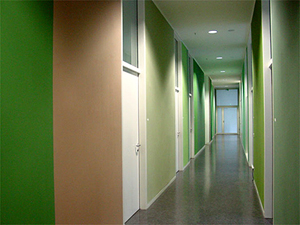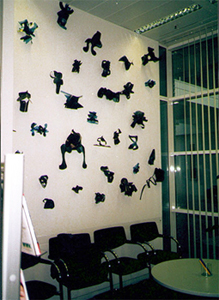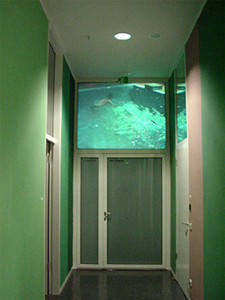Marco
Schuler (Munich) is interested in discovering the secrets
of everyday life. He searches for a kind of magic which is
inherent in the objects and situations that we encounter in
our daily lives. For the waiting room, the artist constructed,
cut, and bent obsolete X-ray photographs to create model-like
sculptures. He formed these images of x-rayed parts of the
human body into three-dimensional faces, body parts, living
organisms, and objects, each of which invites its beholder
to embark on a voyage of free association. The sculptures,
which were entitled "Break a Leg," were arranged on two opposite
walls so that the people waiting to see the doctor seemed
to be sitting between "flying organs" which playfully reminded
the patients of their own physicality.
|


